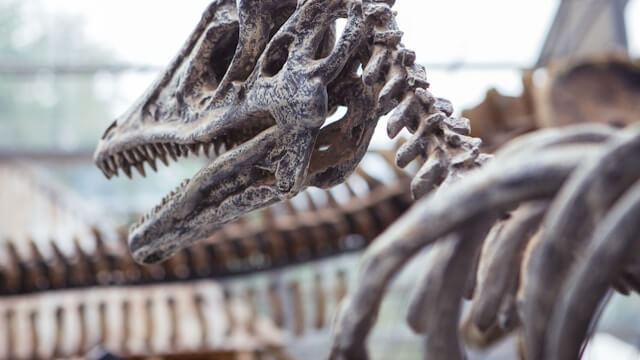Nestled in the hills of southeastern Turkey lies Göbekli Tepe, an ancient archaeological wonder that has captivated the minds of researchers and history enthusiasts alike. This prehistoric site, dating back over 11,000 years, predates even the famous Stonehenge monument. But what makes Göbekli Tepe truly remarkable are the intricate stone carvings that adorn its pillars, some of which have been interpreted as depicting dinosaurs. In this blog post, we’ll dive into the mysteries surrounding the dinosaur Gobekli Tepe carvings and explore what they might reveal about our ancient past.
What is Gobekli Tepe and its Connection to Dinosaurs?
Göbekli Tepe is an ancient megalithic site located in the Southeastern Anatolia Region of Turkey. It consists of a series of circular structures, believed to be the world’s oldest known temples. These structures are adorned with intricate stone carvings, depicting various animals, symbols, and abstract shapes.
While the majority of the carvings portray creatures that would have been familiar to the people of the region during the site’s construction, such as lions, bulls, and wild boars, some have been interpreted as resembling dinosaurs. This has led to speculation about the possibility of human coexistence with these prehistoric creatures, challenging our current understanding of Earth’s timeline.
The Dinosaur Gobekli Tepe Carvings
The most prominent of the alleged dinosaur carvings at Göbekli Tepe is found on a pillar known as the “Vulture Stone.” This pillar features a carving that bears a striking resemblance to a theropod dinosaur, with its long neck, small arms, and distinctive tail. Some researchers have suggested that this carving could represent a species similar to the Iguanodon or the Brachiosaurus.
Other carvings at the site have also been interpreted as depicting dinosaur-like creatures, including what appears to be a stegosaurus and a three-horned dinosaur resembling a Triceratops. These carvings have fueled speculation about the possibility of ancient humans witnessing living dinosaurs, a theory that challenges the conventional understanding of dinosaurs going extinct millions of years before human existence.
Exploring the Dinosaur Carvings at Göbekli Tepe
While the idea of dinosaur carvings at Göbekli Tepe is intriguing, it is essential to approach these claims with a critical eye. Many experts in the fields of archaeology and paleontology have dismissed the notion that the carvings depict actual dinosaurs. Instead, they suggest that the animals represented are more likely to be stylized versions of creatures that were familiar to the ancient people of the region, such as lizards, birds, or even extinct mammals.
It is also important to consider the context in which these carvings were created. The people who built Göbekli Tepe were hunter-gatherers, and the animal carvings likely held symbolic or spiritual significance related to their way of life. The site is believed to have served as a gathering place for ritual purposes, and the carvings may have played a role in these ceremonies.
What Do the Carvings Reveal About Ancient Times?
Regardless of whether the Göbekli Tepe carvings depict dinosaurs or not, they provide valuable insights into the lives and beliefs of the ancient people who created them. The sophistication and intricacy of the carvings suggest that these prehistoric communities possessed a level of artistic skill and cultural complexity that challenges our perceptions of early human societies.
The carvings also hint at the importance of animals in the spiritual and symbolic world of these ancient people. The depiction of a wide variety of creatures, some of which may have been extinct or rare even at the time of the site’s construction, indicates a deep connection to the natural world and a desire to incorporate it into their cultural practices.
Are the Carvings a Proof of Dinosaur Existence Among Humans?
While the idea of ancient humans coexisting with dinosaurs is a fascinating one, the evidence for this claim is lacking. The scientific consensus remains that dinosaurs went extinct approximately 66 million years ago, long before the emergence of human beings.
The carvings at Göbekli Tepe, while intriguing, do not provide conclusive proof of dinosaur-human interaction. The interpretations of these carvings as dinosaurs are largely speculative and not supported by the majority of experts in the relevant fields.
Conclusion
The dinosaur Gobekli Tepe carvings have captured the imagination of many, sparking debates about the possibility of ancient humans witnessing living dinosaurs. While these claims are intriguing, they lack substantial scientific evidence. The carvings at Göbekli Tepe are more likely to represent stylized depictions of animals that were familiar to the ancient people of the region, holding symbolic and spiritual significance within their cultural context.
Nonetheless, the Göbekli Tepe site remains a remarkable testament to the artistic and cultural sophistication of our prehistoric ancestors. The intricate stone carvings provide a glimpse into the lives and beliefs of these ancient communities, reminding us of the enduring human fascination with the natural world and our place within it. As we continue to study and learn from sites like Göbekli Tepe, we gain a deeper appreciation for the rich history of human civilization and the mysteries that still surround our distant past.
